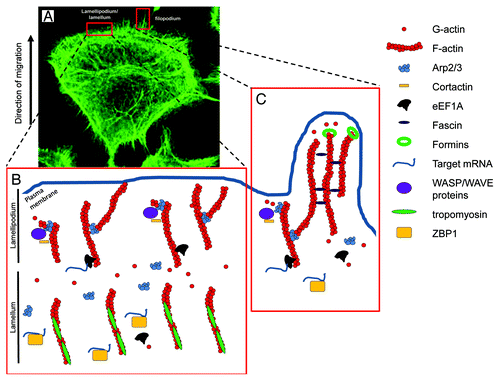Figures & data
Figure 1. Actin organization in migrating cancer cell. (A) Staining for F-actin using Phalloidin-Alexa488 in a migrating Rama 37 malignant cell expressing high levels of S100A4. In this image, the structures of lamellipodium/lamellum and filopodium are clearly visible at the leading edge of the cell. (B and C) present models for the lamellipodium/lamellum and filopodium and the respective molecular organization within, focusing on the proteins presented in this review. (B) A simplified model for lamellipodium/lamellum formation. In the lamellipodium, free barbed ends of actin filaments recruit the Arp2/3 complex via activation by WASP/WAVE complex and cortactin. The Arp2/3 complex nucleates a new actin filament from the side of existing filaments and remains at the branching point. In the lamellum, actin filaments are bound to tropomyosins, preventing interactions with other actin binding proteins. (C) A simplified model for filopodia formation. Individual filaments of the filopodium emerge from the branching point on other filaments, through actin polymerization promoted by the Arp2/3 complex. Further addition of actin monomers at the barbed end of actin filaments is nucleated by the formin family, whereas fascin regulates filopodia stability through its bundling activities.
